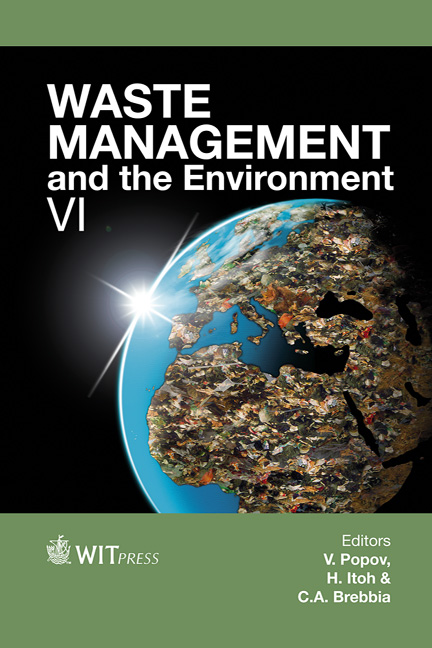Sustainable Waste Processing In A Grate Furnace And In A Fluidized Bed Incinerator: WtE, Recycling And Environmental Concerns
Price
Free (open access)
Transaction
Volume
163
Pages
10
Page Range
167 - 176
Published
2012
Size
491 kb
Paper DOI
10.2495/WM120161
Copyright
WIT Press
Author(s)
I. Vermeulen, J. Van Caneghem, C. Block, A. Van Brecht, G. Wauters & C. Vandecasteele
Abstract
Sustainable waste processing in a grate furnace and in a fluidized bed incinerator: WtE, recycling and environmental concerns I. Vermeulen1, J. Van Caneghem1, C. Block1,2, A. Van Brecht3, G. Wauters3 & C. Vandecasteele1 1Department of Chemical Engineering, University of Leuven, Belgium 2Leuven Engineering College Groep T, Belgium 3Indaver NV, Mechelen, Belgium The Indaver integrated grate furnace, incinerating municipal solid waste (MSW) along with comparable industrial waste, is described. In the installation energy is recovered by producing steam which is delivered to other companies, or used to generate electricity. The bottom ashes are wet-washed; ferrous and non-ferrous metals and granulates are recovered. Next to the grate furnace, a fluidized bed combustor (FBC) operated by SLECO is situated. It can co-incinerate various types of industrial wastes (including ASR), RDF, waste water treatment (WWT) sludges, etc. and produces steam to generate electricity. The bottom ashes are recovered as secondary raw material. It is demonstrated that both installations have a good environmental performance and address many aspects of cleaner production. This way, both grate furnace and FBC may play an important role in sustainable waste management. Depending on the fractions of the energy carrier(s), the actual energy recovery varies from 41% for the grate furnace (steam + electricity) to 27% for the FBC (only electricity). The most important airborne emissions and solid residues are monitored in both installation and are discussed in detail. For all components of interest, emissions remain well below Flemish limit values. Moreover, it was shown that both installations act as a POP sink when flue gas emissions are taken into account as a POP output. From the bottom ashes of both incinerators ferrous and non-ferrous metals and granulates are recovered, representing 19.9 and 9.2 wt% of the original waste input of respectively the grate furnace and the FBC. When introducing higher amounts of heavy metals into the FBC, co-incinerating ASR, the bottom ashes still fulfil Flemish requirements for use as secondary raw material. Keywords: waste-to-energy, material recovery, ASR, MSW, RDF, heavy metals, POPs.
Keywords
waste-to-energy, material recovery, ASR, MSW, RDF, heavy metals, POPs.





